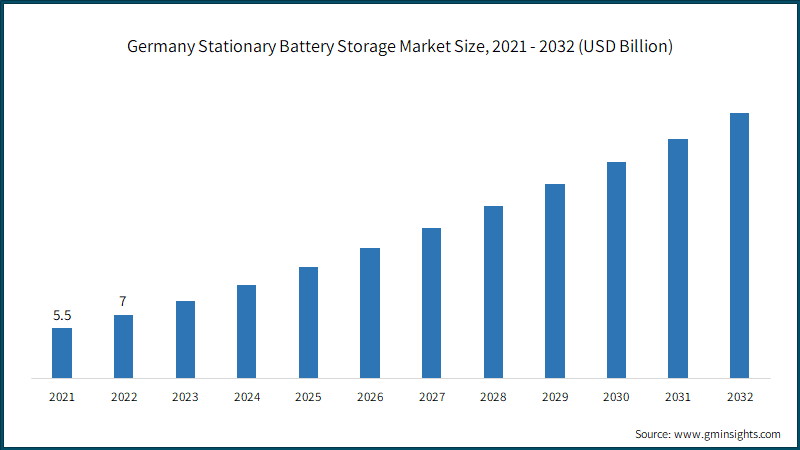Home > Energy & Power > Battery Technology > Stationary Battery Storage > Europe Stationary Battery Storage Market
Europe Stationary Battery Storage Market Analysis
- Report ID: GMI7053
- Published Date: Oct 2023
- Report Format: PDF
Europe Stationary Battery Storage Market Analysis
The lead-acid battery market is expected to reach USD 950 million in 2022, primarily due to the maturation of its technological aspects and the emergence of alternative storage technologies. The increasing need for compact storage solutions, along with the high energy and power density characteristics offered by other storage options, has somewhat restrained the demand for lead-acid batteries. Furthermore, a significant shift towards the advancement of technologies such as lithium-ion, redox flow batteries, and efficient hybrid energy storage systems for applications in grid storage, emergency power supply, and remote energy management has introduced intense competition within the industry.

The behind the meter application is set to grow at a CAGR of over 18.5% through 2032. The increasing focus on improving the power supply quality and resilience will stimulate the demand for batteries. The BTM storage industry is dominated by the lead acid and lithium-ion battery systems. Rapidly declining battery prices and growing development of mini grids is anticipated to drive the stationary battery storage deployment across behind the meter applications.

The stationary battery storage market across Germany held around 28.1% of the revenue share in 2022. Germany has been at the forefront of the transition toward renewable energy sources. The expansion of wind and solar power installations has driven the need for stationary battery storage to manage intermittent energy generation and ensure a stable energy supply. There was a growing interest in residential battery storage systems among German households. This trend was driven by incentives and feed-in tariffs for homeowners to store excess energy and reduce reliance on the grid.

